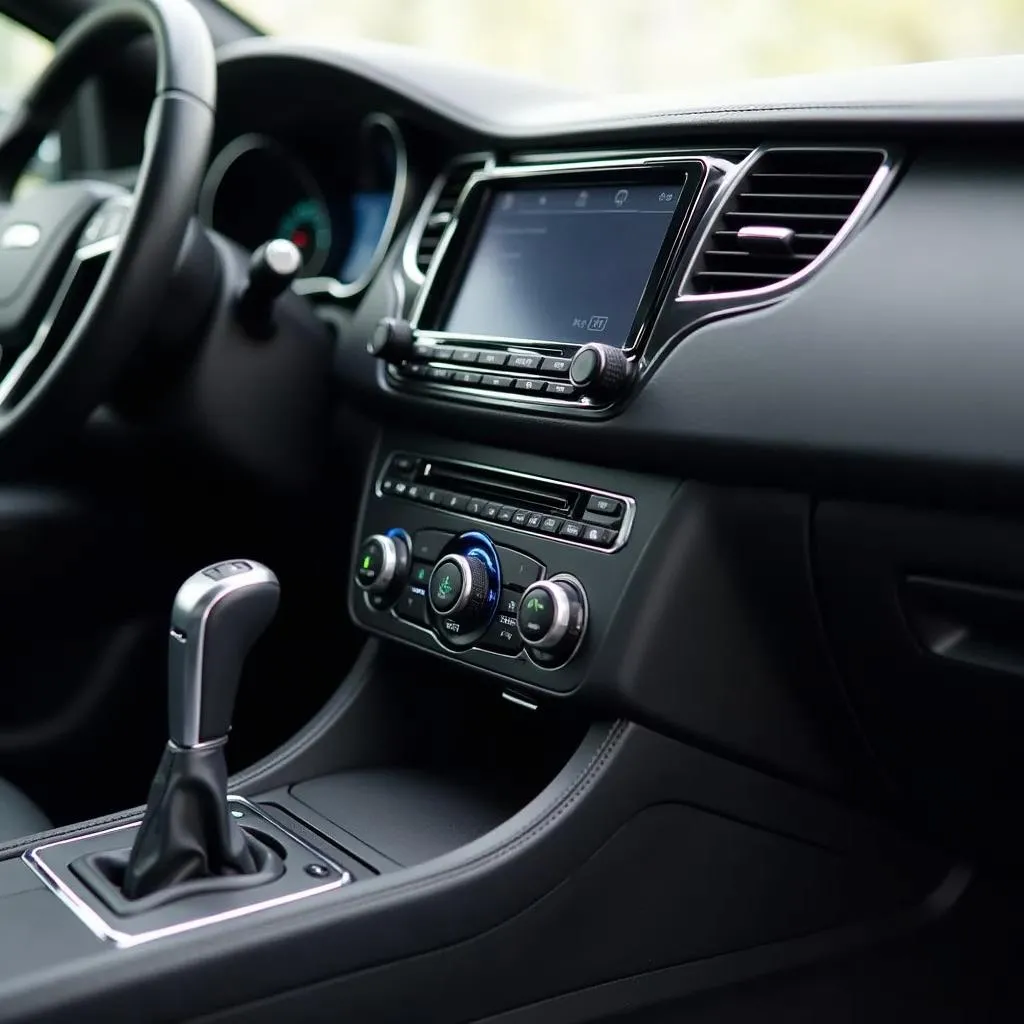A brake warning light illuminating on your dashboard is a clear signal that something isn’t right with your braking system. While it might be tempting to dismiss it as a minor glitch, ignoring it could lead to serious safety hazards. This comprehensive guide delves into the common causes of a persistent brake warning light and provides practical solutions to help you address this issue.
Understanding Your Car’s Brake System and Warning Lights
Before we jump into the causes and solutions, let’s take a moment to understand how your car’s braking system works and the role of the warning lights.
Your vehicle utilizes a sophisticated hydraulic system that amplifies the force you apply to the brake pedal, effectively slowing down or stopping your car. This system relies on several components working in perfect harmony:
- Brake Pedal: The interface through which you initiate braking.
- Brake Booster: Multiplies the force from your foot to the master cylinder.
- Master Cylinder: A hydraulic pump that pushes brake fluid through the brake lines.
- Brake Lines: Channels carrying brake fluid to the wheels.
- Brake Calipers (Disc Brakes) or Wheel Cylinders (Drum Brakes): Houses the pistons that push the brake pads or shoes.
- Brake Pads (Disc Brakes) or Brake Shoes (Drum Brakes): Create friction against the rotors or drums, slowing down the wheels.
The brake warning light is designed to alert you of any malfunctions within this system. It typically illuminates when you engage the parking brake or if there’s an issue with:
- Low Brake Fluid Level: A significant drop in brake fluid is a major red flag, often indicating a leak in the system.
- Worn Brake Pads: Your brake pads have a wear indicator that triggers the warning light when they thin down to a certain level.
- Faulty Brake System Components: Malfunctioning sensors, a failing master cylinder, or problems within the ABS system can also illuminate the warning light.
Common Causes of a Brake Warning Light Staying On
Now that you have a basic understanding of your car’s braking system, let’s delve into the common culprits behind a constantly illuminated brake warning light:
1. Low Brake Fluid Level
This is often the most straightforward culprit. Brake fluid is the lifeblood of your braking system, and a leak can lead to a significant drop in pressure, compromising your ability to stop effectively.
Solution: If you suspect a leak, it’s crucial to inspect the brake lines, master cylinder, and calipers for any signs of wetness or dripping fluid. A professional mechanic should address any leaks immediately.
2. Worn Brake Pads
Brake pads are designed to wear down over time. When they reach a certain thinness, a wear indicator, often a small metal tab, comes into contact with the brake rotor, creating a squealing sound and triggering the brake warning light.
Solution: If you hear a squealing noise when braking, it’s time to inspect your brake pads. Replacing worn brake pads is crucial for maintaining optimal braking performance.
3. Faulty ABS Sensor
The Anti-lock Braking System (ABS) is a critical safety feature that prevents your wheels from locking up during hard braking, helping you maintain steering control. A malfunctioning ABS sensor can disrupt this system, triggering the warning light.
Solution: Diagnosing a faulty ABS sensor often requires specialized equipment. A mechanic can scan your car’s computer for error codes related to the ABS system and replace the faulty sensor.
4. Brake Light Switch Issue
The brake light switch, located near the brake pedal, activates your brake lights when you press the pedal. A faulty switch can lead to issues with both your brake lights and the warning light on your dashboard.
Solution: A mechanic can easily test the brake light switch for proper functionality and replace it if necessary.
5. Parking Brake Engaged
While seemingly obvious, it’s easy to overlook a partially engaged parking brake. Many modern cars will remind you with a persistent warning light.
Solution: Ensure your parking brake is fully disengaged.
When to Seek Professional Help
While some brake warning light issues might seem straightforward to address, it’s crucial to remember that your car’s braking system is critical for your safety. If you’re unsure about any aspect of brake repair or diagnosis, seeking professional help is always the safest course of action.
e30 brake light warning always on
Tips for Maintaining a Healthy Braking System
Preventing brake problems is always preferable to dealing with them after they arise. Here are some proactive measures to ensure your braking system stays in top condition:
- Regular Brake Inspections: Aim for an annual brake inspection by a qualified mechanic, or more frequently if you drive in harsh conditions or frequently brake hard.
- Timely Brake Fluid Flush: Follow your car manufacturer’s recommended brake fluid flushing intervals.
- Quality Brake Pads: Invest in high-quality brake pads from reputable brands.
- Mindful Driving Habits: Avoid riding your brakes and anticipate stops to reduce unnecessary wear and tear.
Conclusion
A brake warning light that stays on should never be ignored. By understanding the common causes outlined in this guide, you can take the appropriate steps to diagnose and address the issue, ensuring your safety and the optimal performance of your vehicle. Remember, when it comes to brakes, erring on the side of caution is always the best approach.
2008 ford escape brake warning light on
If you’re uncomfortable tackling any brake-related repairs yourself, don’t hesitate to seek professional assistance from a qualified mechanic. They have the expertise and tools to diagnose and resolve the issue efficiently, giving you peace of mind on the road.

